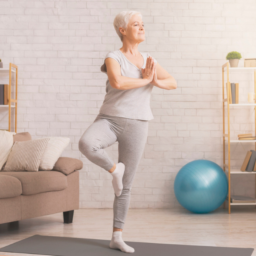 Parkinson’s is officially classified as a movement disorder because it involves damage to the areas of the brain, nerves and muscles that influence the speed, quality, fluency and ease of movement. Motor (or movement-related) symptoms are usually the most visible elements of Parkinson’s. Motor symptoms of Parkinson’s also respond well to Parkinson’s medications.
Parkinson’s is officially classified as a movement disorder because it involves damage to the areas of the brain, nerves and muscles that influence the speed, quality, fluency and ease of movement. Motor (or movement-related) symptoms are usually the most visible elements of Parkinson’s. Motor symptoms of Parkinson’s also respond well to Parkinson’s medications.
Although motor symptoms of Parkinson’s often get the most attention and treatment, researchers estimate motor symptoms don’t actually appear in most people until around 60−80% of the nerve cells in the brain that make dopamine have stopped working because of Parkinson’s.
In this article, we will help you identify and learn about the various motor symptoms of Parkinson’s so you can be proactive in the management of your symptoms.
The impacts of Parkinson’s on movement are called motor symptoms.
Primary motor symptoms of Parkinson’s include:
- Tremor: a rhythmic shaking in your arms, legs or chin. Most people with Parkinson’s who experience tremor that is worse when relaxing and resting have rest tremor. Others experience active tremor, which means their shaking worsens when trying to do something, like drinking out of a cup of coffee or eating with a spoon.
- Rigidity: painful stiffness, often in the arms, legs, neck or back muscles.
- Akinesia, Bradykinesia, Hypokinesia: Akinesia and bradykinesia refer to the reduction of movement, slowness of movement, and sometimes even complete lack of movement that can be caused by Parkinson’s. Hypokinesia refers to a loss of momentum or force in movement that can come with Parkinson’s, usually in connection with akinesia, bradykinesia, or both. The small, cramped handwriting (called micrographia) that some people with Parkinson’s experience is thought to be some combination of akinesia and hypokinesia.
- Postural Instability: balance problems caused by a loss of reflexes that help you stay upright. This can cause challenges with general balance as well as walking (especially making a turn). Sometimes postural instability brings the tendency to fall backward, called retropulsion.
Early motor symptoms can also include a mask-like face or loss of facial expression, small, cramped handwriting (micrographia), and decreased natural arm swing.
People often complain of a heaviness feeling, dragging of one side, or cramping in certain muscles. Speech can become softer and more difficult as Parkinson’s progresses and swallowing can also be affected.
As Parkinson’s progresses, walking can change from shuffling steps to festination, or a tendency toward smaller and faster steps that can tip you forward. Sometimes people with Parkinson’s will experience freezing of gait, feeling like your feet are glued to the floor, and trouble starting to walk again once this happens. Freezing often occurs when you first begin to walk, make a turn, or are in a tight and crowded space.
Other movement symptoms of Parkinson’s include:
- Reduced manual dexterity, making everyday tasks like buttoning a shirt difficult
- Severe muscle cramping
- Pain without an obvious cause
Learn more about how to evaluate your walking-related motor symptoms and how to manage them with our Gait, Balance, and Freezing Worksheet .
Learn more about Parkinson’s symptoms with the NINDS Parkinson’s Disease – National Institute of Neurological Disorders and Stroke, MedlinePlus: Parkinson’s Disease and Mayo Clinic: Parkinson’s Disease.
Parkinson’s slows you down, but staying active, like riding my bike, keeps me limber and moving and improves my outlook. It’s really important not to give up on doing the things you like. —Robert
Medications
With the exception of postural instability, most motor symptoms of Parkinson’s respond well to medications, especially in the early stages of Parkinson’s. When medications provide almost total relief from the primary motor symptoms of Parkinson’s, this is sometimes referred to as the “honeymoon phase.”
Even after this early honeymoon phase, medications can be extremely effective, especially when they are optimized by your physician. Optimization of medication means making sure you receive an appropriate dose of your medications to best control motor symptoms.
There are three primary categories of medications to treat motor symptoms of Parkinson’s:
- Dopaminergic medications for movement
- Dopaminergic medications replace lost dopamine and can be used to treat tremor, stiffness, slowness and problems walking. These medications may also have a beneficial impact on non-motor symptoms of Parkinson’s related to sleep, mood and cognition. Dopaminergic medications, such as carbidopa-levodopa (Sinemet®), make up the majority of medicines used to treat Parkinson’s and can sometimes be used in combination with each other because of how they impact the body. As Parkinson’s progresses and more of these dopaminergic medications are needed to address symptoms, you may experience motor fluctuations and frustrating side effects of the added or increased medication, like dyskinesia. Dyskinesia is uncontrollable, jerky movements of the arms and legs caused long-term use of levodopa.
- Muscle relaxants and pain medicines for painful spasms and rigidity
- Anticholinergic medications for rest tremor
- Anticholinergic medications are used to block the neurochemical acetylcholine, which can help reduce rest tremor. These medicines do not improve other motor symptoms such as rigidity, slowness or walking problems. Anticholinergic medications should be used cautiously as they can cause side effects such as dry mouth, blurred vision, dry eyes, constipation, memory problems and confusion, especially in people who are older.
Occasionally people with Parkinson’s want to avoid increasing their medications. While there are a number of different reasons for this, there used to be a concern among healthcare providers that certain Parkinson’s medications would become less effective over time. As a result, many adopted a philosophy of “levodopa sparing,” or using the lowest possible dose of levodopa in an attempt to conserve the medication’s effectiveness for as long as possible.
This medical perspective is no longer believed to be true. Numerous research studies have shown Parkinson’s medications should be started as soon as symptoms start to interfere with your quality of life. Research has also demonstrated finding an optimal combination and dosage of medications has strong potential benefits such as reducing the risk of falls, improving quality of sleep and increasing your ability to exercise.
That said, many people do discover medications are not as effective as they used to be the longer they live with the disease. The reason has less to do with how long you have been using Parkinson’s medications and more to do with the amount of damage Parkinson’s has done to dopamine-producing nerve cells. As Parkinson’s progresses, more nerve cells that produce dopamine die, leaving less and less dopamine in the brain. Most Parkinson’s medications work to replace lost dopamine, but since current medications can only replenish so much lost dopamine, the more dopamine you lose, the less effective medications will be controlling the various symptoms of Parkinson’s.
You may experience less time when the medications are working effectively (called on times) and longer, more frequent periods where medications are not working and symptoms return or get worse (called off times). During off time, problems walking or speaking and other Parkinson’s symptoms like tremor, stiffness, slowness, posture, balance and anxiety may become more pronounced.
As off times increase, medications may need to be taken closer together. This can cause dyskinesia, uncontrollable, jerky movements of the arms and legs that comes as a side effect of adding or increasing dopaminergic medication. Sometimes the side effects of Parkinson’s medications can be even more frustrating than the symptoms these medications are trying to treat. If you are experiencing dyskinesia, begin recording when you experience on times, off times, dyskinesia as well as when you take your medications to help you to keep an ongoing conversation with your doctor about the most effective ways for you to use and adjust your Parkinson’s medications.
Learn more about how medications and other therapies can help you live well.
Exercise
Because of how Parkinson’s can affect everything from mood to fatigue to balance and mobility, regular exercise is essential for people living with Parkinson’s. While studies show regular exercise for anyone can improve heart health, increase strength, improve endurance, reduce fatigue and positively impact mood and self-esteem, research continues to illustrate the incredible impact exercise can have on both the motor and the non-motor symptoms of Parkinson’s. Exercise can help manage many symptoms of Parkinson’s, especially tremor, balance, depression and fatigue. Research also suggests exercise may even help protect the areas of the brain affected by Parkinson’s from getting worse (a phenomenon known as neuroprotection), which may slow the progression of Parkinson’s.
Specific research studies have found people with Parkinson’s who participated in high-intensity exercise experienced noticeable improvement in their overall movement and even a reduction of tremor after exercising. In other studies, individuals with Parkinson’s who exercised more required less additional medication and had the slowest rate of change over the course of a year.
Surgical Therapies
As Parkinson’s symptoms progress, increasing medications to address them can bring significant side effects. One of the most common and frustrating side effects of Parkinson’s medications is dyskinesia, uncontrollable movements of the arms and legs. Surgical therapies are explored after medications have been optimized and the side effects of adding more medications start to outweigh the benefits the medications provide. Current surgical therapies include deep brain stimulation and enteral suspension of carbidopa-levodopa.
Deep brain stimulation therapy (DBS) involves placing small electrodes into places in the brain affected by Parkinson’s. The wires emit continuous electrical impulses (stimulation) from a device similar to a heart pacemaker. These impulses positively affect the parts of the brain that influence movement and can improve many motor symptoms such as tremor, stiffness and slowness. DBS may also make daily activities like getting in and out of chairs, walking, dressing and bathing easier.
When the stimulator is working as it should, you will experience symptom control like you do when medications are on, except you will need less or even no medications and the on periods may last longer, with less severe off periods.
Carbidopa-levodopa enteral suspension (Duopa®) is a gel form of the carbidopa-levodopa medication. This is the same basic medication found in many common Parkinson’s medications that work to replace dopamine lost in the brain.
The gel is infused directly into the small intestine through an internal tube. A small portable infusion pump is surgically connected to a part of the small intestine called the jejunum. The infusion pump administers the drug directly into the small intestine continuously over a period of 16 hours. Since the gel medication bypasses the stomach, it allows the medication to be more predictably and consistently absorbed throughout the day, which reduces fluctuations and the frustrating effects that can come during off periods.
Tremors are involuntary shaking movements and often the most obvious symptom of Parkinson’s. Tremors are caused by imbalances in neurotransmitters. As dopamine cells disappear because of Parkinson’s, a neurotransmitter called acetylcholine becomes overexpressed and this excess results in involuntary shaking movements. Parkinson’s-related tremors usually start on one side of the body, often in the hand or foot.
Most people with Parkinson’s experience resting tremor, occurring when the body part is not actively being used. This is significantly different than an “action tremor,” which happens during an activity, such as a bringing a cup of coffee to your mouth.
In addition, some people with Parkinson’s report having “internal tremors” that may feel like an episode of anxiety or nervousness. While internal tremors can be extremely difficult to identify, they often respond to medications in a similar way to external tremors.
Over time, tremor can spread to affect both sides of the body, including arms and legs. As with all motor and non-motor symptoms of Parkinson’s, the rate of how a tremor may progress can vary from person to person.
Tremor can draw unwanted attention and make once routine daily activities like getting dressed, using the computer or even taking medications challenging and tiring. Early in the progression of Parkinson’s, tremor can often be controlled by moving the affected body part or even simply bringing your attention to it. Over time though, tremors may become more severe or less able to be controlled by medications.
Strategies to help manage tremor include:
- Take your medication on time! This helps minimize off times that can make tremor worse.
- Streamline your focus to reduce multitasking. Rest your elbow on the table when taking a drink to stabilize yourself or sit down when you button your shirt to concentrate more intently on the task at hand.
- Reduce stress. Nerves and feeling stressed, in general, can make tremor worse, as can fatigue.
- Consider adaptive technologies and products designed to make everyday tasks easier, such as specially-designed razors, pens, keyboards, utensils, cups and dishes.
Rigidity refers to muscle stiffness and tightness associated with Parkinson’s. Like tremor, rigidity usually appears first on one side of the body and spreads to both sides over time. Occasionally, rigidity can go unrecognized as a symptom of Parkinson’s, instead of being attributed to past injuries or old age.
Muscle stiffness associated with Parkinson’s can make movement difficult and can also impact how you walk (gait). Stiff muscles combined with slowed, smaller movements particularly increases the risk of falling.
Rigidity usually responds well to Parkinson’s medications, especially dopaminergic medications such as carbidopa-levodopa (Sinemet®). Regular exercise, seeing a physical therapist and complementary therapies such as acupuncture and massage can all help manage rigidity.
Learn more about Bradykinesia and Rigidity
Parkinson’s tends to make movement slower, smaller and generally more difficult. Bradykinesia refers to the slowing of movement, while akinesia to the occasional lack of movement that can be caused by Parkinson’s. Hypokinesia refers to a loss of momentum or force in movement that can come with Parkinson’s, usually in connection with akinesia, bradykinesia or both. People experiencing any of these “kinesias” have a hard time keeping up a normal pace and/or intensity of movement.
Although akinesia means “lack of movement,” people with Parkinson’s typically can start activities with a normal range of motion. However, momentum decreases as the activity goes on. For instance, your handwriting might become smaller and more cramped as you progress across the page, your voice may become softer as you speak to someone and your steps will become smaller as you walk long distances.
Regular exercise as well as specific drills for the areas you are experiencing slower and smaller movements, like hand exercises or speech therapy, can help manage the effects of these “kinesias.” Physical therapists, occupational therapists and speech therapists can all provide important instruction and tools to help you adapt and best manage the effects of akinesia, bradykinesia and hypokinesia.
Learn more about Bradykinesia and Rigidity
Postural instability refers to general balance issues that come from how Parkinson’s delays reflexes related to posture. Although this typically shows up as problems with balance, there can be many different causes for balance challenges in Parkinson’s.
The latest addition to the core motor symptoms recognized by most Parkinson’s experts, postural instability is a motor symptom that tends to appear later in the progression of Parkinson’s and is, unfortunately, the least responsive of all the motor symptoms to medications and surgical therapies.
Physicians typically assess postural instability with a “pull test.” A physician will stand behind you and pull you back to see how many steps it takes you to recover your balance. If it takes more than one step to recover your balance, you could have a potential problem with postural instability.
Regular exercise and specific drills and trainings to increase balance and core strength can all help manage postural instability and the other challenges to balance that come from Parkinson’s.
Learn how exercise can improve balance with our Living Well Challenge™ video.
NINDS Parkinson’s Disease – National Institute of Neurological Disorders and Stroke

















